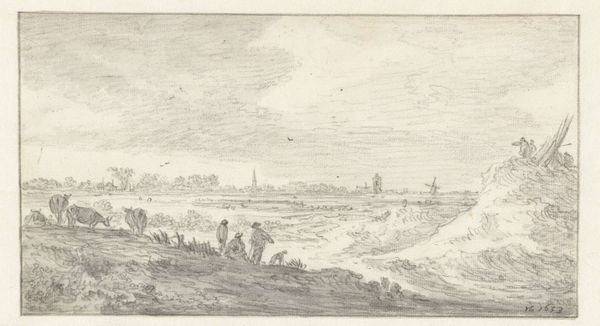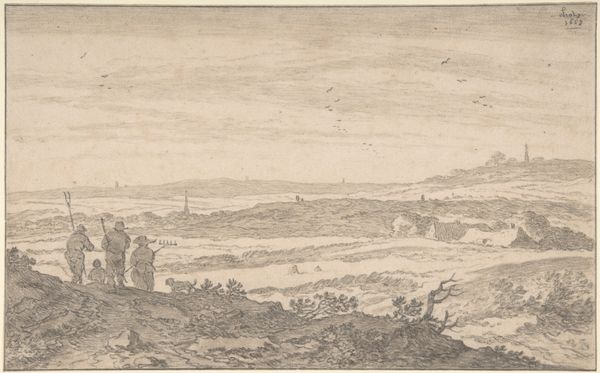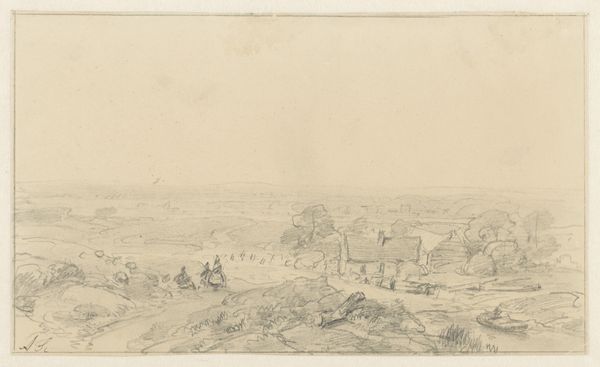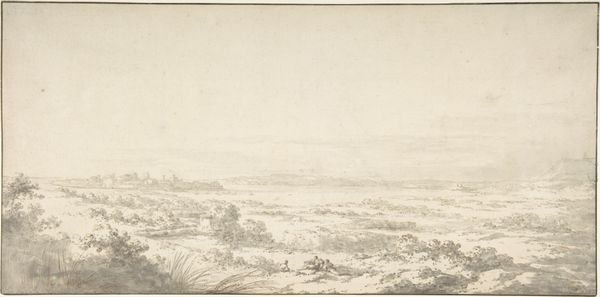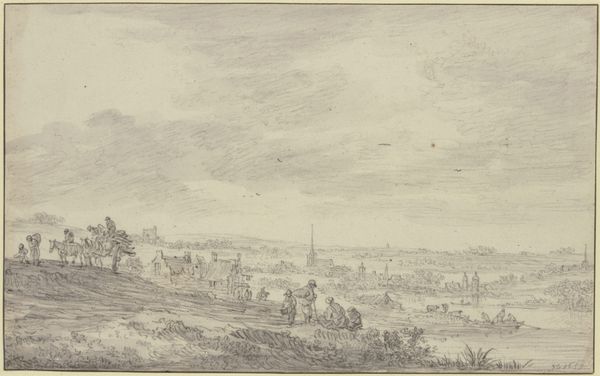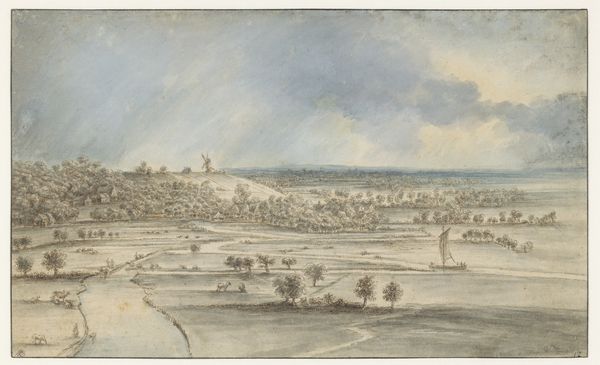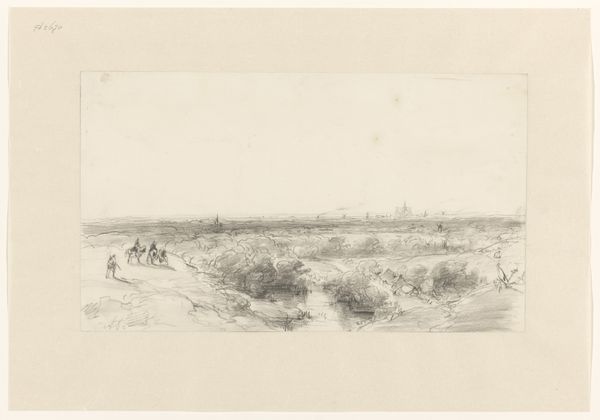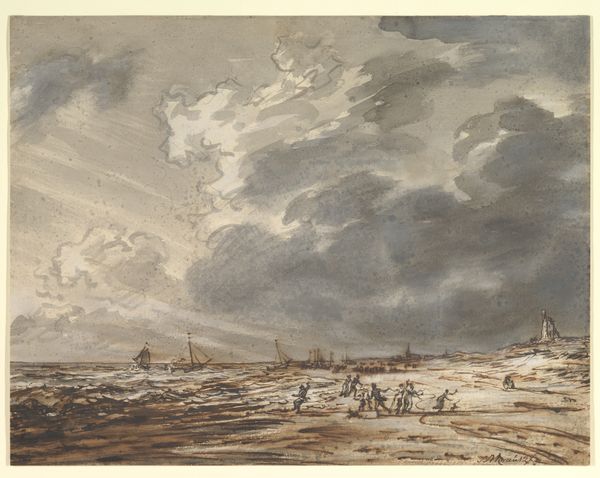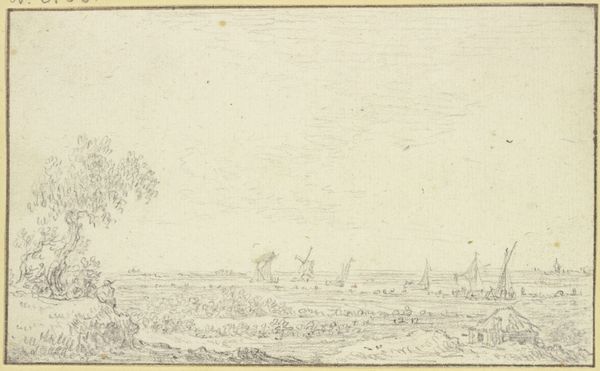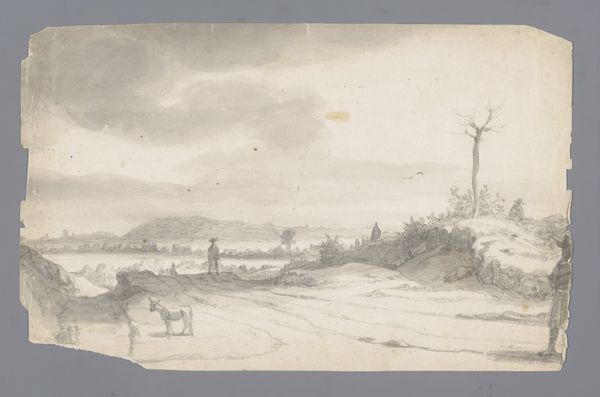
plein-air, watercolor
#
plein-air
#
landscape
#
watercolor
#
pencil work
#
watercolour illustration
#
genre-painting
#
watercolor
Dimensions: height 135 mm, width 318 mm
Copyright: Rijks Museum: Open Domain
Editor: This is Johannes Tavenraat’s "Vergezicht met jagers bij Materborn," a watercolor from 1866 currently held at the Rijksmuseum. It strikes me as quite subdued, almost melancholic, despite depicting a hunting scene. What do you see in this piece beyond just a simple landscape? Curator: It’s precisely that melancholic tension that fascinates me. Hunting scenes were traditionally celebratory, a display of power and provision. But here, the muted palette and plein-air style disrupt that narrative. Considering the broader social context of 19th-century Europe, with increasing urbanization and industrialization, could this be interpreted as a critique of the aristocracy's detachment from the changing world? Editor: That’s an interesting point. So, the artist might be using this seemingly innocuous landscape to comment on social issues? Curator: Absolutely. Think about who had access to land and hunting rights in 1866. It wasn’t the working class. Tavenraat, by depicting this scene in a style that emphasizes the everyday, the real, might be subtly highlighting the inequalities inherent in the social structure. Where does the 'everyday' aesthetic serve a symbolic function, making a not-so-subtle dig at the ruling class and their privileges? Editor: I see. So it’s not just a pretty picture of a hunt, but a commentary on class and power. The softness of the watercolor almost belies its sharpness. Curator: Exactly. And think about the act of "taking" or conquering nature—a predominantly male activity represented here, hunting—juxtaposed with a delicate, almost feminine, medium like watercolor. This highlights gendered power dynamics, offering a deeper understanding of the social tensions bubbling beneath the surface of the seemingly peaceful landscape. Editor: Wow, I would never have picked up on so many layers just from looking at it. I appreciate that view that shifts my perspective away from formal conventions. Curator: And I see a budding critical eye beginning to consider all aspects of how power dynamics show up in visual spaces. Always question what’s *not* being shown, and *who* benefits from certain images, styles, and representations.
Comments
No comments
Be the first to comment and join the conversation on the ultimate creative platform.
